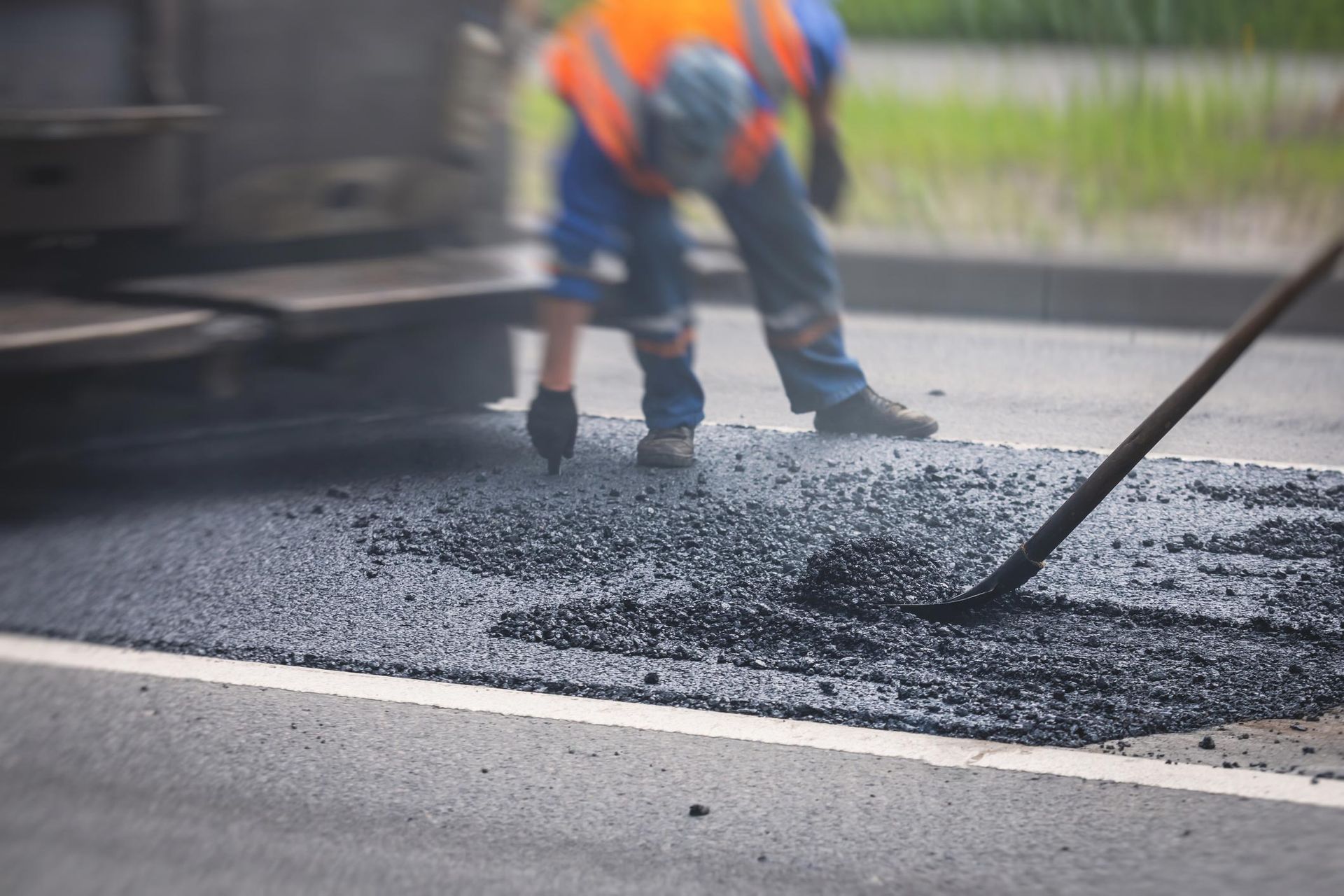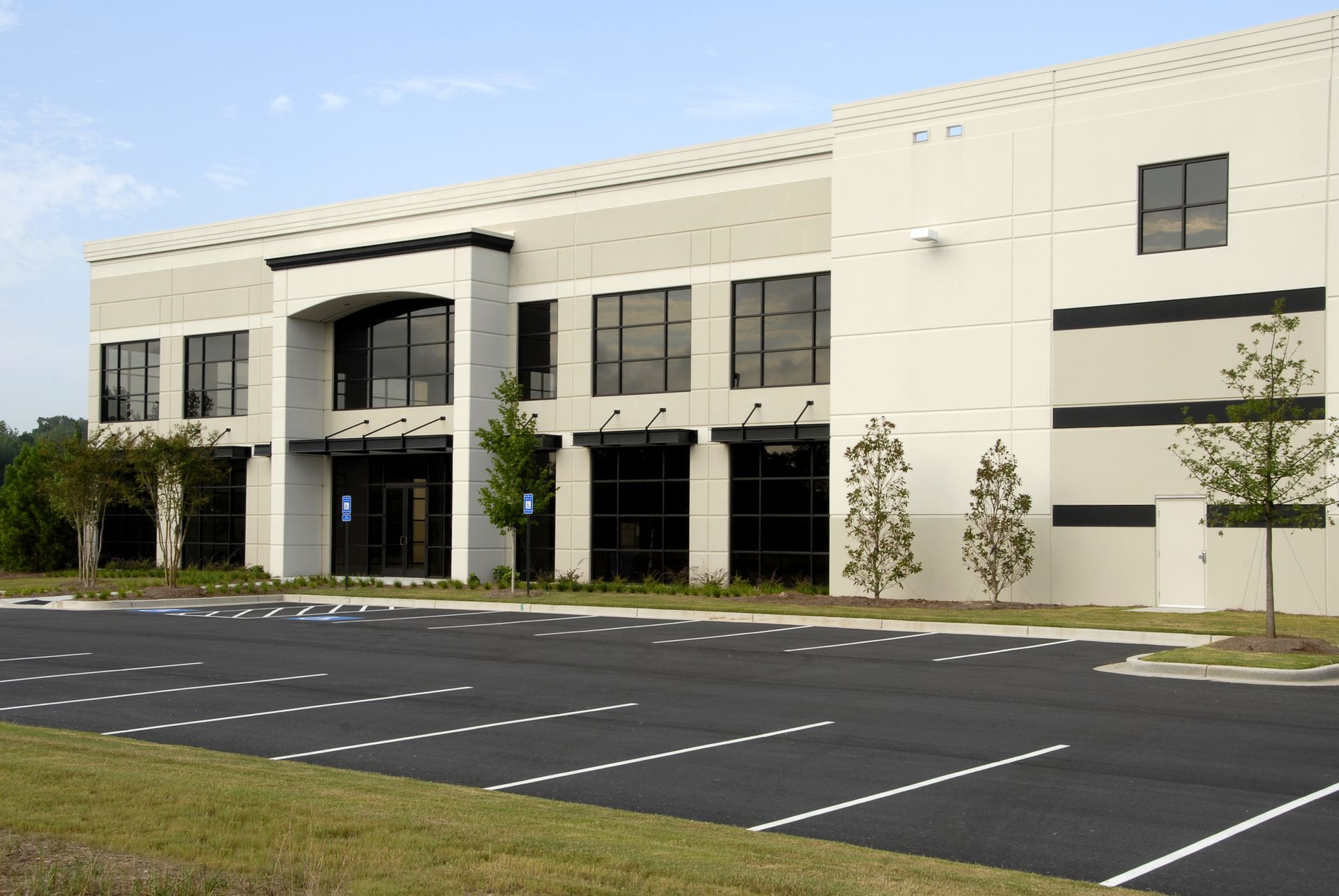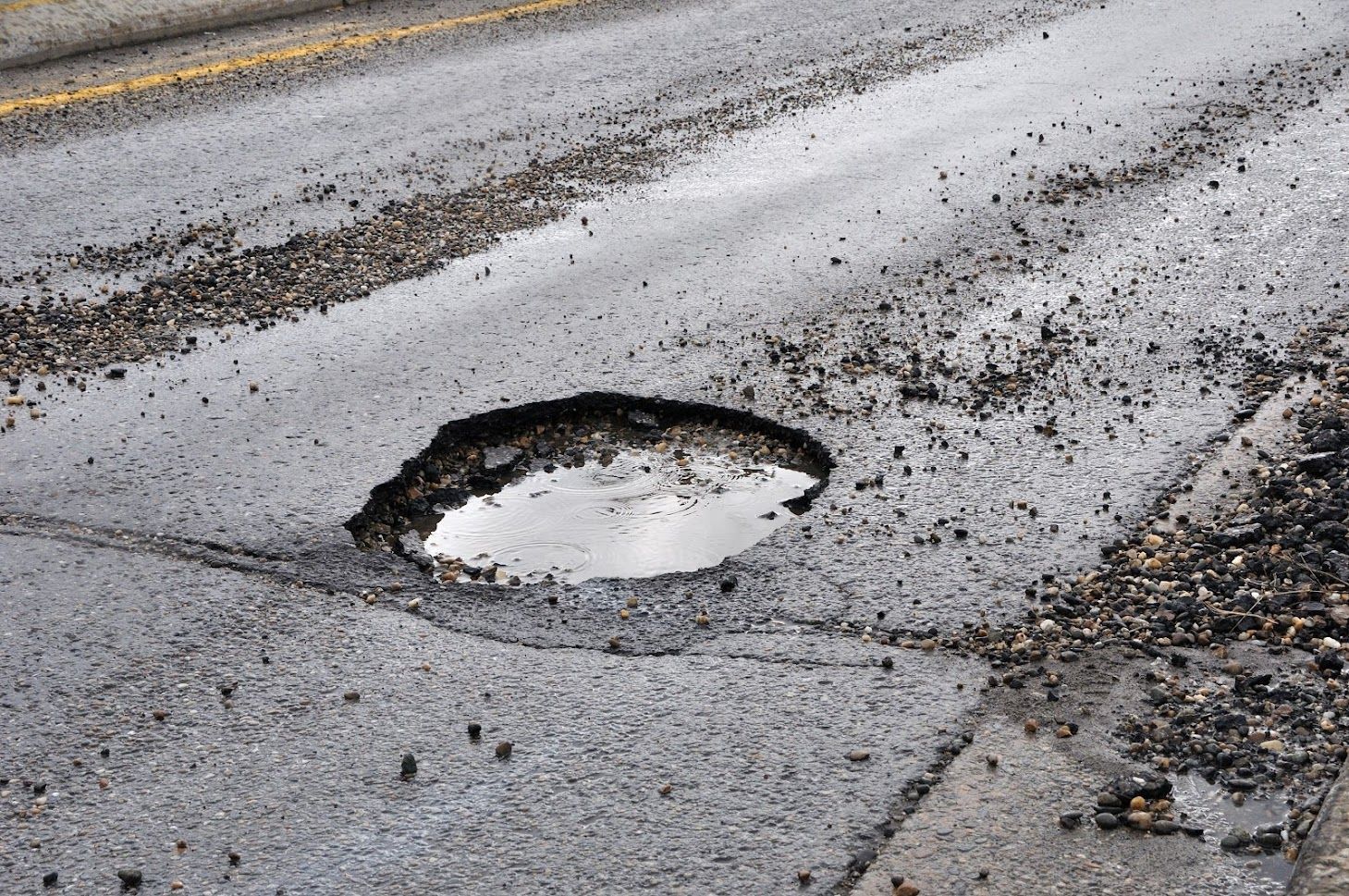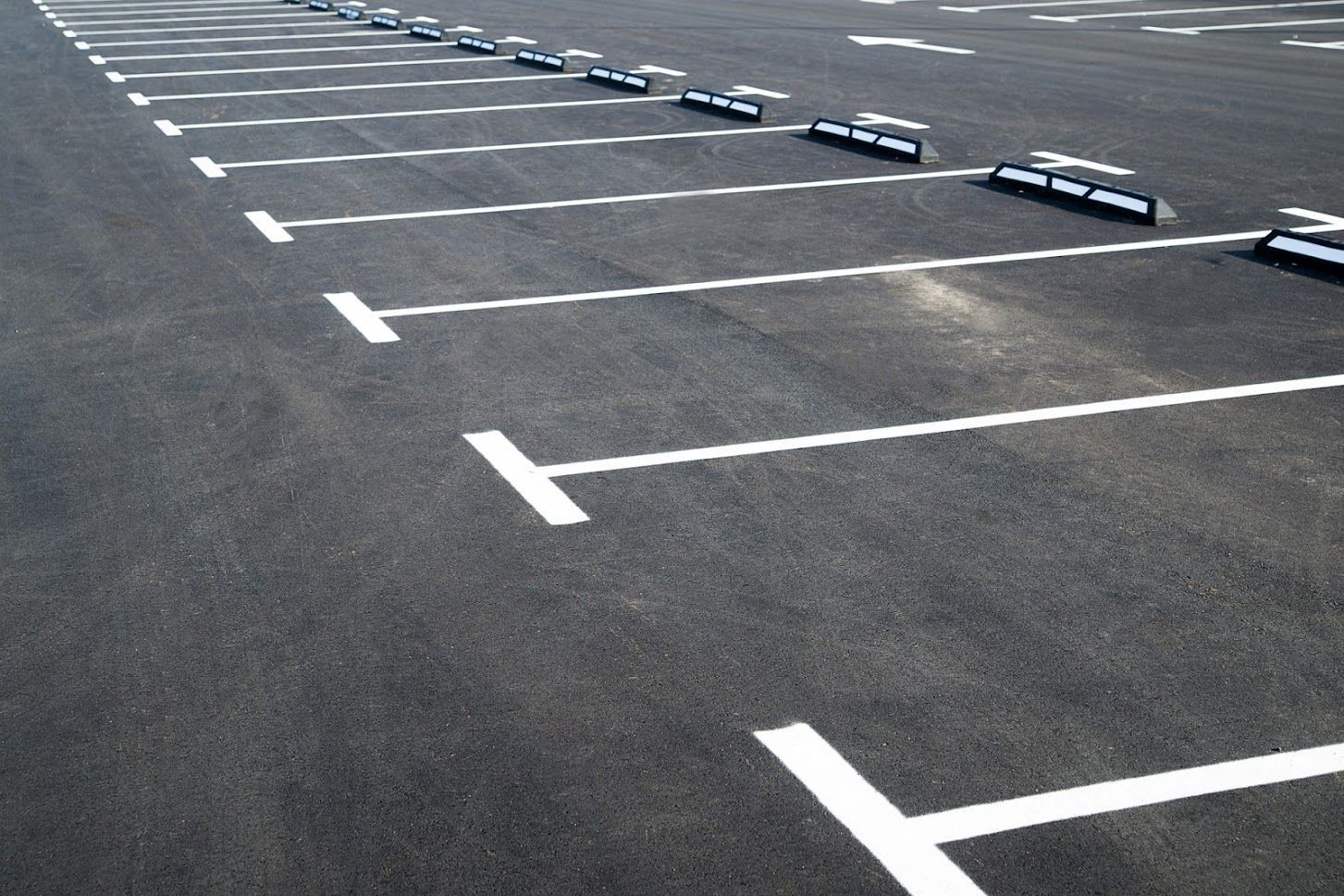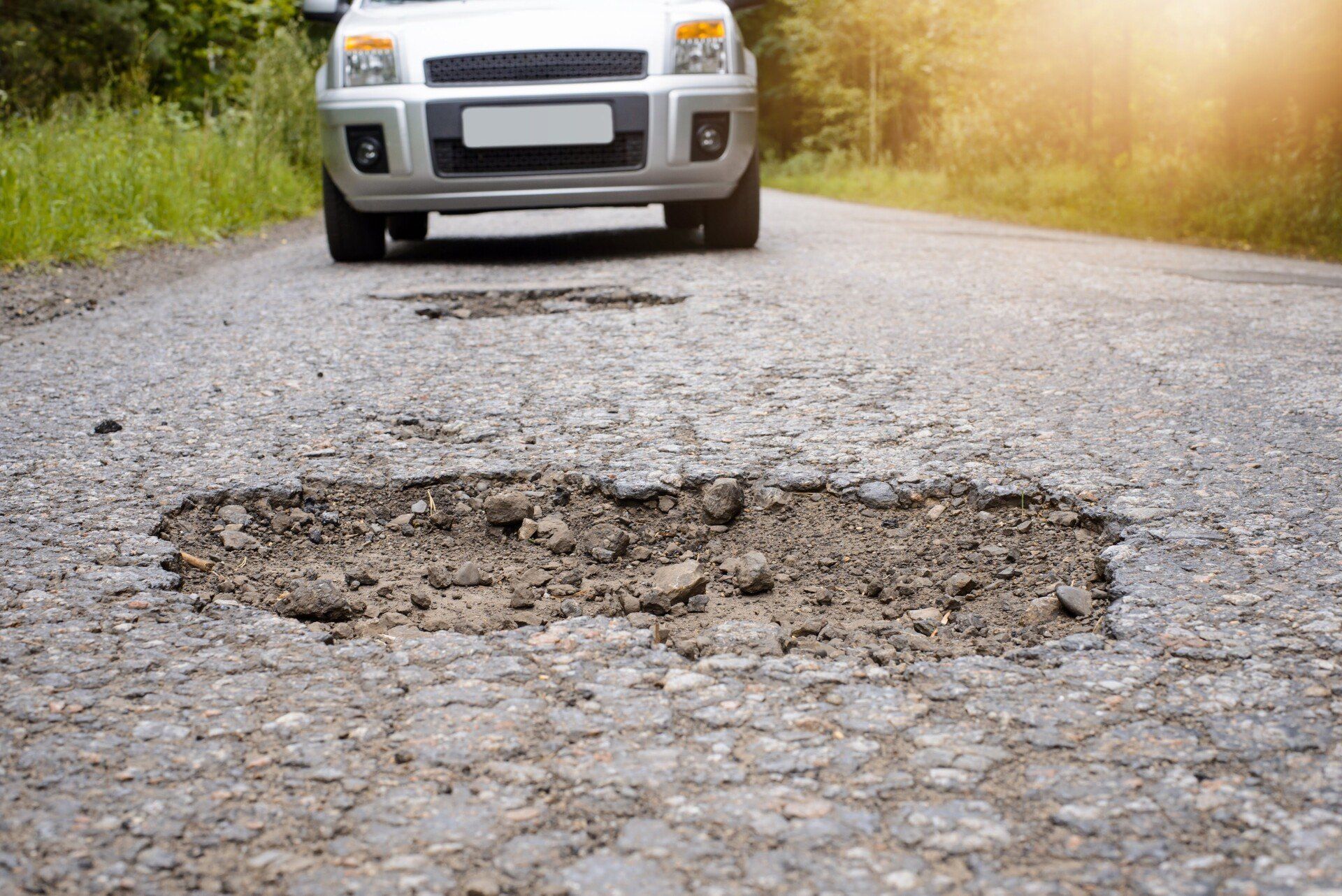7 Tips to Protect Your Asphalt Pavement in Kansas City, Olathe, Overland Park, Independence and Surrounding Area's
September 20, 2021
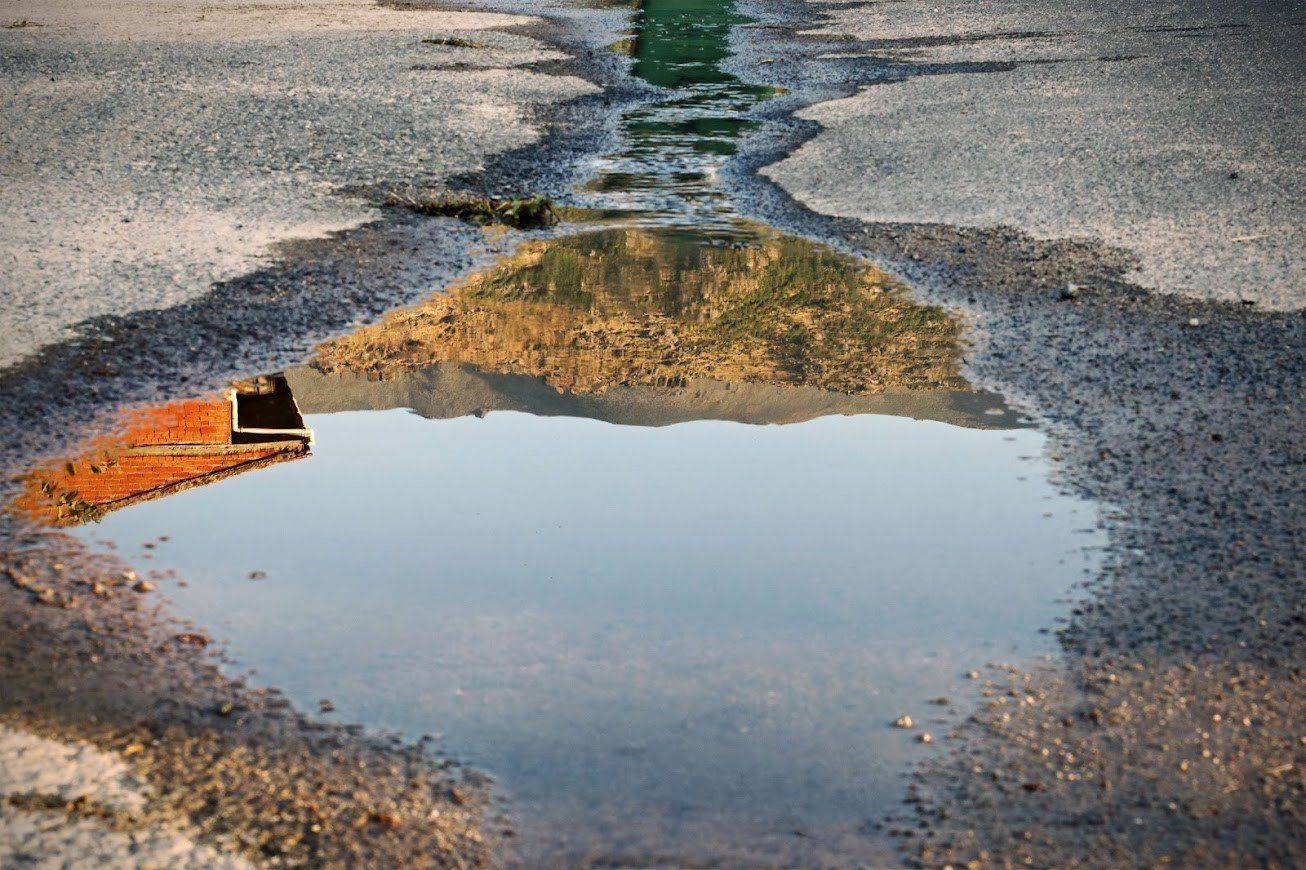
Properly installed asphalt is durable and can last many years. Proper installation of asphalt is especially important in harsh weather area's like Kansas City, Olathe, Overland Park, Shawnee, Independence, Blue Springs and surrounding area's. The longevity, however, is determined by how well you maintain the asphalt. Asphalt deterioration begins as soon as it is laid due to exposure to elements such as rain, ice, the sun's UV rays, and the weight of the vehicles parked on your pavement.
However, proper maintenance will keep at bay problems that can permanently harm your surfaces. Take swift action as soon as you see any bumps, potholes, line cracks, and breaks on the asphalt pavement to avoid pricier repairs. Here are a few more pro tips to help you protect your asphalt.
1. Remove Any Debris
Always sweep up any rocks, leaves, or dirt on your asphalt. Debris can block drainages and impede the water's natural flow which causes it to stand. The pooled water then soaks into the asphalt pavement and softens it. The softened asphalt will then be more susceptible to potholes and cracks.
Regular sweeping of the pavement also allows you to keep track of any surface anomalies so you can take action before things get out of hand. Also, ensure that you clean any traces of household chemicals, oil, or gas immediately.
2. Control Long Term Parking
As much as asphalt is durable, it's only suitable for normal parking. Parking for long periods can result in cracks and impressions due to the uneven distribution of the weight of the parked object. An easy way to remedy such issues is to place wide boards or plywood beneath support struts, jacks, or tires.
3. Kill Weeds
It's easy to ignore weeds, but you shouldn't. Weed sprouts up quite fast, and they will be all over the place in a matter of time. What damages the pavement is the weed's roots as they spread underneath the asphalt pavement and create cracks. Water then finds its way into the cracks and mess up your asphalt.
4. Watch Out for Excess Weight
Limit who uses your asphalt pavement. Very weighty equipment can break the asphalt. This means you should change traffic patterns for overweight vehicles such as loaded tractor-trailers, garbage trucks, heavy construction equipment, and delivery trucks. Such vehicles will exert a lot of stress on the pavement and indent it.
If the lot is for public use, there should be signage that prohibits access to such vehicles. Even a waste disposal service truck should not use a residential lot to avoid damage. If need be, allow the disposal truck access early in the morning when the asphalt is still cool.
5. Regular Seal Coating
A seal coat every 24 to 36 months not only elevates the aesthetics of your asphalt pavement but also protects the pavement against water damage. A waterproof seal coating prevents water from seeping into the asphalt's sub-layers. The seal coat also fills small holes and cracks and keeps the aggregate intact.
6. Stop Bad Driving Habits
How you drive on asphalt determines its condition. Bad driving habits such as turning the wheels when the vehicle is motionless presses tires into the asphalt and cause scuff marks or groves. Train yourself to make wide turns when the vehicle is still in motion. Sharp starts and stops are also habits you should stop to avoid scuffing the asphalt pavement.
7. Repair Holes and Cracks in Good Time
Regular maintenance is necessary to increase the life of your asphalt pavement. Failure to repair minor imperfections such as holes and cracks might later necessitate pricier repairs or a new pavement altogether. Filling cracks and holes in good time keeps water or snow away and delays asphalt degeneration.
Adhering to these tips guarantees a long life to your asphalt pavement. Leave the seal coating, repairs, and maintenance of your asphalt pavement to the professionals. Contact J & B Asphalt
for unmatched professional service. Call J&B Asphalt and paving for all of your asphalt maintenance in Kansas City, Olathe, Overland Park, Shawnee, Independence, Blue Springs and surrounding area's.

Asphalt paving is important in constructing and maintaining roads, driveways, and parking lots. It is a low-cost, long-lasting material that withstands heavy traffic and extreme weather conditions. But a few common mistakes can be made when paving with asphalt, leading to a weak surface that only lasts for a short time. Here are some of the most common blunders to avoid when paving with asphalt. Inadequate Base Preparation The asphalt surface will probably crack and get holes over time if it is not leveled or packed down well. The base must be excavated to a specific depth and width before the asphalt can be laid. The base material should mix crushed stone, gravel, and sand to provide a stable and long-lasting foundation for the asphalt. Then, this material should be leveled and pressed down with a roller to make a smooth, stable asphalt surface. Using the Incorrect Asphalt Mix The asphalt mix is made by mixing asphalt cement with a certain amount of aggregate, such as crushed stone, gravel, or sand. The ratio of aggregate to asphalt cement will change based on how the surface will be used and how much traffic it will get. When the wrong mix is used, the surface becomes weaker and more prone to cracking and damage. A mix that is too heavy on aggregate and too light on asphalt cement, for example, will not provide enough stability and will crack under heavy traffic. A mix that is too heavy on the asphalt cement and too light on the aggregate, on the other hand, will be more prone to rutting and deformation. Not Properly Compacting the Asphalt After laying the asphalt, it should be compacted with a roller. Compacting the asphalt removes air pockets and ensures a smooth and stable surface. Asphalt that has not been properly compacted is more prone to cracking and shifting. Compaction should be done in multiple passes, beginning with a light pass to remove any air pockets, followed by heavier passes to ensure a smooth and stable surface. The installer should move the roller slowly to ensure the asphalt is properly packed. Leaving the Asphalt Unsealed Sealing the asphalt will protect it from the elements and extend its life. A seal coat is a thin layer of asphalt that is poured over the asphalt. This liquid asphalt layer will shield the surface from water, oil, and UV rays. If the asphalt is not sealed, it is more likely to crack and be damaged by water, oil, and UV rays. The seal coat should be applied a few months after asphalt installation to let the asphalt fully cure. Not Using a Professional Asphalt Contractor Hiring a contractor who isn't qualified or doesn't have enough experience can lead to bad work, a weak surface that doesn't last long, and even expensive repairs or complete repaving. However, a professional contractor will know how to prepare the foundation, use the right mix, pack down the asphalt, and seal it. Working with a professional contractor ensures all permits and inspections are in place and that the work is done according to local rules and codes. They will also have all the tools and resources they need to do the job well and quickly. Look no further than J & B Asphalt & Paving for professional asphalt paving services. Our skilled and experienced professionals are dedicated to delivering lasting, high-quality results. We take special care to ensure a smooth and long-lasting surface. In addition, our team is up to date on all requirements to ensure your work is done per local codes and regulations. Don't take any chances regarding your asphalt paving requirements. Contact us today to set up a consultation and learn more about how we can assist you with your next project.

